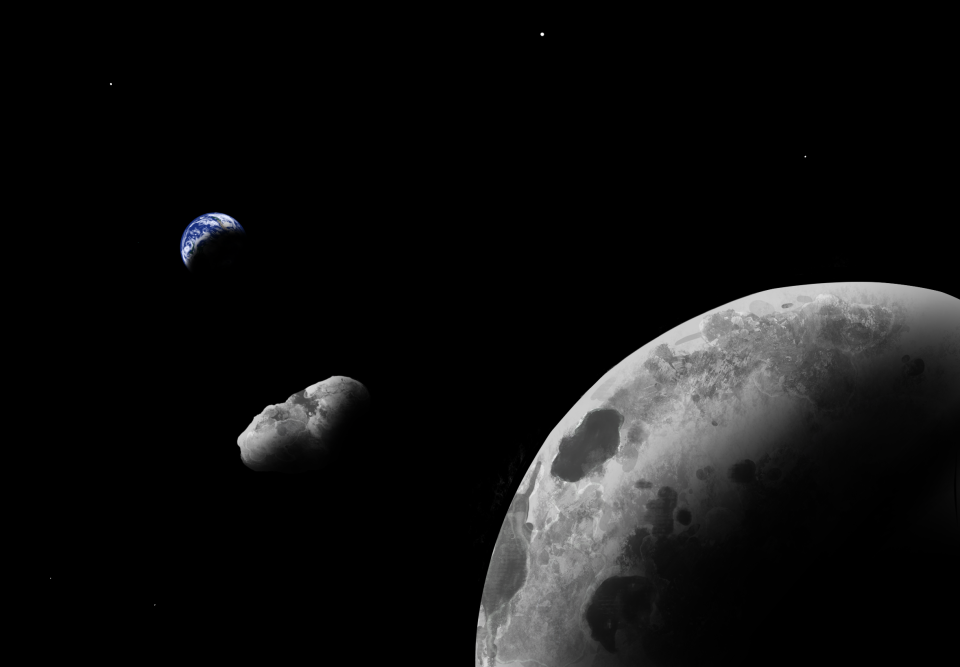A near-Earth asteroid the size of a Ferris wheel may be a piece of the moon, astronomers say
There are more than 27,000 near-Earth objects in our solar system, most of which came from the inner solar system between Mars and Jupiter. But researchers say one near-Earth asteroid didn't come from either planet – and perhaps is a piece of our moon.
The near-Earth asteroid Kamo`oalewa, a name that comes from Hawaiian chants alluding to "an offspring that travels on its own," is known as a quasi-satellite, meaning it orbits the sun but gets close to Earth.
It was discovered in 2016 in Hawaii, and it can be observed only every few weeks in April. It's about the size of a Ferris wheel; astronomers estimate it is 150 to 190 feet in diameter and gets as close as roughly 9 million miles from Earth. Its size may seem significant, but it can be detected only by the largest telescopes on Earth.
But when studying Kamo`oalewa in southern Arizona, University of Arizona astronomers noticed something unusual: how it reflected light and matched lunar rocks collected during NASA's Apollo missions. Astronomers believe the asteroid may have come from the moon, but they are unsure how it could have broken off.

"I looked through every near-Earth asteroid spectrum we had access to, and nothing matched," Ben Sharkey, a graduate student at the university, said in a statement.
Sharkey and Vishnu Reddy, his adviser and associate professor of lunar and planetary sciences at Arizona, then began to debate whether the asteroid did come from the moon and studied it for more than three years.
"We doubted ourselves to death," Reddy said.
After missing the chance to observe it in 2020 because of the COVID-19 pandemic, the team was able to see Kamo`oalewa this year, and the results seemed to fit the bill. Their findings were published Thursday in the journal Nature Communications Earth and Environment.
"This spring, we got much-needed follow-up observations and went, 'Wow, it is real,'" Sharkey said. "It's easier to explain with the moon than other ideas."
What happens if an asteroid heads toward Earth? NASA has a plan, and it involves a crash
Watch out: Several asteroids bigger than Great Pyramid of Giza will approach Earth in coming weeks
To the moon? NASA says it won't make goal of putting astronauts on the moon by 2024
Another clue was that Kamo’oalewa's orbit of the sun is similar to Earth's, but it just has more of a tilt.
Renu Malhotra, study co-author and Arizona planetary sciences professor, said it's not typical for asteroids to have that orbit, and the object had been in the orbit for about 500 years.
Astronomers are still trying to determine what may have caused the asteroid to break off. Theories the team have tossed around is that Kamo’oalewa is a product of an ancient asteroid impact or that it was captured in its orbit from other near-Earth objects.
Follow Jordan Mendoza on Twitter: @jordan_mendoza5.
This article originally appeared on USA TODAY: Ferris-wheel sized asteroid Kamo`oalewa may have come from the moon

